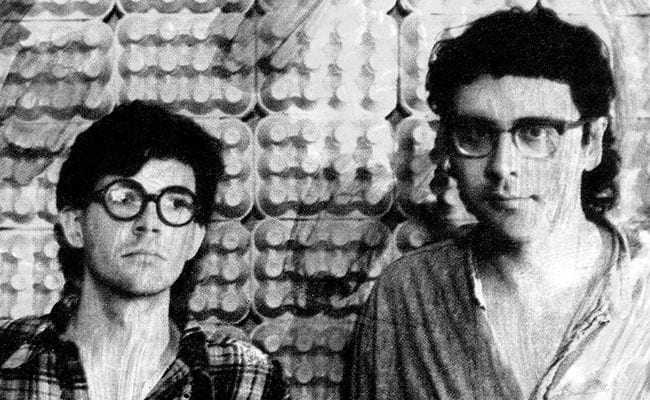
Remember when rock music was raw and intimidating, when it still had the ability to surprise, amuse and confront the mainstream perception of art? Despite common romantic, nostalgic representations of the genre, it’s never been as challenging as when it was being mercilessly mocked and assaulted in the ’80s by the post-punk and no wave movements. Half Japanese may not have formally belonged to either of those scenes, but they nonetheless had the attitude of the former and the penchant for musical chaos of the latter, even while playing 12-bar blues and jangly guitar solos through much of their career.
In retrospect, Half Japanese seem like indie rock’s missing link, the chain between Hüsker Dü, Minutemen, Slint, Sonic Youth, the Pixies and Pavement. Borne out of a period when post-punk was still restlessly evolving and reinventing itself, they blurred lines between irony and earnestness, tradition and innovation, “music” and “noise”, but they still built an individual identity for themselves. They were college rock’s purest act, existing in the intersection between intellectuality and vulgarity. Over the course of their early records, Half Japanese mined American music tradition for banalities and absurdities, ripping off blues and rock ‘n’ roll, exposing their tropes and idiosyncrasies through elaborate, constructive disorder. Detuned instruments and rambling, inane lyrics were commonplace, to say nothing of frontman Jad Fair’s pitchy, whining vocals. Half Japanese got closer to musical Dadaism than their contemporaries because, whenever they chose, they could emulate the most lowdown bluesmen and traditionalist rock-heads and tear apart their music from the inside. It goes without saying, of course, that they’re not for everybody.
Half Japanese Volume 2: 1987-1989 is the second set of reissues collecting the early Half Japanese catalog, consisting of the records released in that three year period: Music to Strip By, Charmed Life and The Band That Would Be King. For all intents and purposes, these albums don’t stray too far from the same formula. Music to Strip By feels slightly more blues-oriented, Charmed Life seems heavier and more contemporary and The Band That Would Be King tends to blend those styles and emphasize the unmitigated chaos, but as usual when talking about Half Japanese, those labels are loose and only vaguely accurate, and Jad, his brother David and the rest of the band defy the categorizations frequently. Each of the reissued albums are over 30 tracks long, each song a compact gem of ironic, belligerent rock ‘n’ roll in the minimalist tradition of cerebral post-punk artists like Wire. The comparison fits beautifully on charged up, grungy numbers like “Lucky Star” and “Said and Done”, when the band doesn’t bother with extraneous guitar solos or meandering verses and instead just dig into their riffs.
If Elvis, the Beatles and the Rolling Stones were all sexual innuendo and druggy doublespeak, rock music didn’t became truly lude and explicit until the Velvet Underground, the Ramones and the Sex Pistols, at which point it wasn’t even called rock anymore. Half Japanese brought the punk attitude to traditional rock once and for all, tangible on wacky, sexually frustrated standouts like “Stripping For Cash”, “Sex At Your Parents House” and “Madonna Nude”. These songs recall early punk’s provocative-for-the-sake-of-it ethos while still being musically challenging and inventive. Other tracks, such as lite rock radio jam “Silver and Katherine” and rollicking country track “Big Wheels”, are bafflingly nuanced appropriations of tame musical styles. Add in the band’s signature erratic covers of tracks like “La Bamba”, and you get a collection that offers a varied, multi-faceted picture of a band who couldn’t care less about sounding good or making sense. In short, Half Japanese knew how to do it all, or, at the very least, they knew how to fake it.
Though Volume 2 fails to collect the full Half Japanese essence, it’s an attractive package for completist fans and curious outsiders alike. The liner notes provide an extensive, compelling essay penned by David Fair called “How to Write Songs the Half Japanese Way”, giving major insight into how a band that was so destructive could possibly have written and performed so many catchy, interesting songs in their long lifespan. Besides that, it’s hard to pin down any major, defining takeaways from the three volatile albums that Volume 2 presents. It’s clear that Half Japanese are strongest when straying from tradition and just indulging in brutal chaos. It’s not how rock music is remembered today, of course, but through albums like these, Half Japanese gave us another way to look at and enjoy the genre. Volume 2 preserves that perspective at a time when rock music is slowly dying once again.


![Call for Papers: All Things Reconsidered [MUSIC] May-August 2024](https://www.popmatters.com/wp-content/uploads/2024/04/all-things-reconsidered-call-music-may-2024-720x380.jpg)



